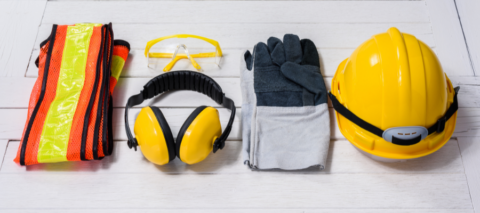An estimated 2.4 million workers sustained work-related injuries and were treated in emergency departments during 2019 (Source: CDC Traumatic Occupational Injuries). As an employer, you are responsible for the safety of your employees. Do you have a safety program in place to prevent their work-related injuries?
A safety plan or program is just as important as any other area of a business. These programs help businesses by identifying ways and plans to prevent workplace injuries. They also reduce costs and lost production, as well as ensure the long-term safety of your employees.
Despite the difficulties that can be faced, establishing a safety culture is as critical as employees are the most valuable asset a company can ever have. So how does a company establish a quality safety culture? Here are four steps that can serve as a great starting point in motivating safety across your business.
Identify known health and safety hazards
You can’t create a plan if you don’t know what the hazards are. Look at past accident reports, OSHA reports, workers’ compensation claims, and any other reports of illnesses, injuries, or close calls.
After potential risks are evaluated and understood, companies should put formal processes and standard operating procedures in place for employees to follow that will reduce or even eliminate risks. These processes and procedures should be consistent and communicated to employees regularly. This could include scheduled training and even drills for employees to routinely practice.
Training
Employees need to be trained on potential hazards they may face in the course of performing their duties. This includes a general safety orientation, as well as specific training on hazards and how to protect themselves.
Keep in mind that training is an ongoing process. Retraining should take place when jobs change, if standards have changed, after long absences, or as needed to ensure employee safety and compliance.
Comply with regulations
Workplace safety standards come with hefty OSHA fines if they aren’t being followed. The financial impact of these fines can be huge for some employers. Establishing a safety program and culture of safety cuts down on costs associated with fines, workers’ compensation claims, and liability claims.
Know what safety standards you need to follow for your industry and be sure to follow any updates or changes.
Open communication
Open communication is key to a successful safety program. It’s important that upper management respond to the concerns of employees and go above and beyond to ensure safety of workers. Oftentimes the employees can identify safety hazards so safety plans can be updated accordingly.
Once a plan has been put in place, it’s essential to get everyone at the company—from top executives to low-level workers—to commit to creating a safe workplace and, even beyond that, committing to work safely themselves. This includes all employees changing their mindsets in order to view safety as the most important priority 100% of the time.
Implementing a safety culture is a serious undertaking for any company. At OHC, we believe the best way to handle accidents is to prevent them. To do that, a company must have a proper safety program in place. We’ve helped dozens of clients implement a successful safety culture and create not only a safer work environment but also a more productive one. Give us a call at (251) 434-6770 and we start building your safety culture today.
ABOUT OHC
Occupational Health Center offers employers a large array of health services designed to maximize the effectiveness of your valued employees. With a strong focus on workers’ compensation claims, our services promote the continued well-being of your employees’ health and their return to work.
For more than 10 years, the business, industrial, and corporate communities have placed their trust in our doctors to provide medical care, services, and testing for thousands of their employees.
We’re glad you asked, how can we help?
Sources:
CDC Traumatic Occupational Injuries
Maine Department of Labor







